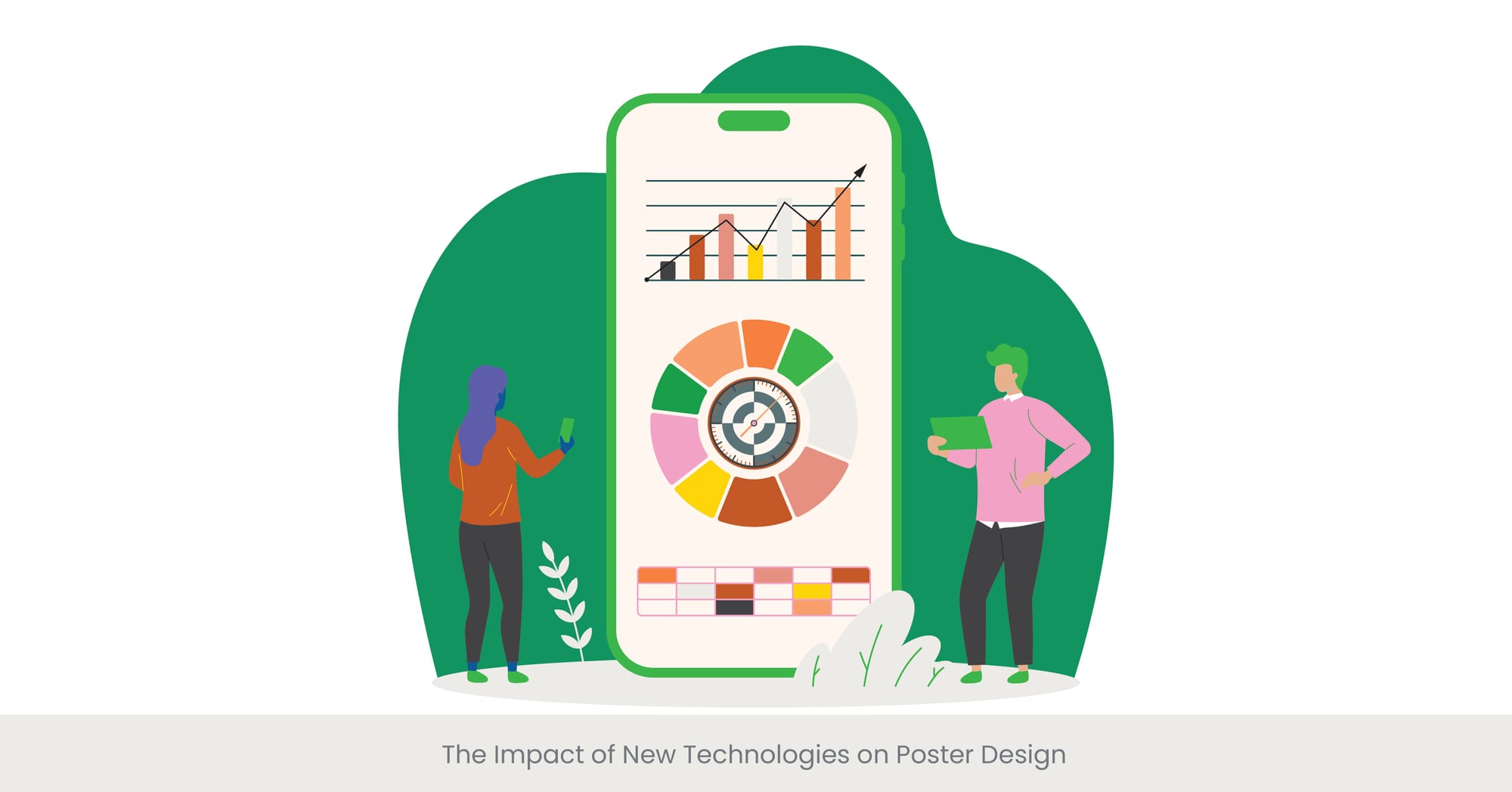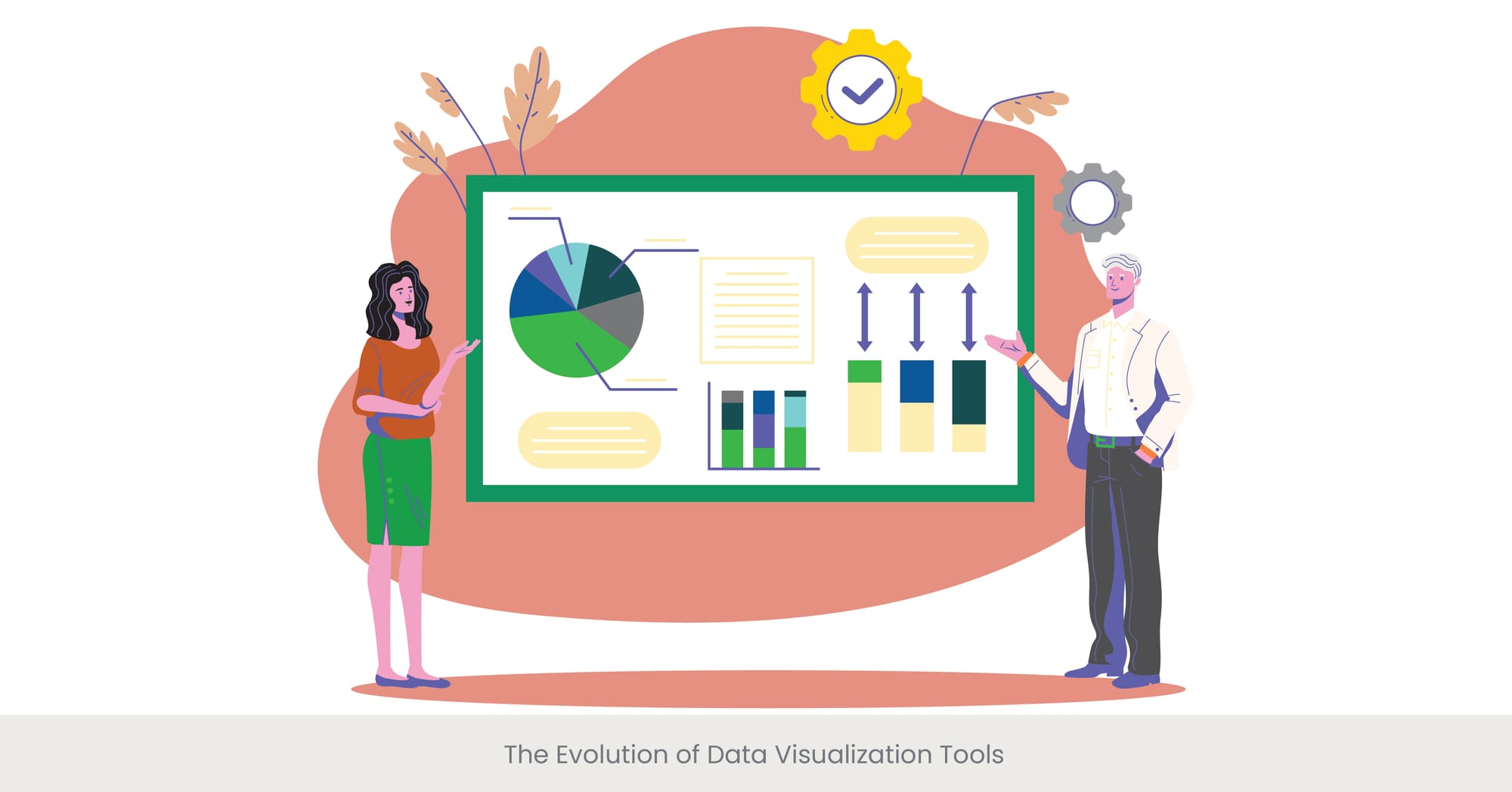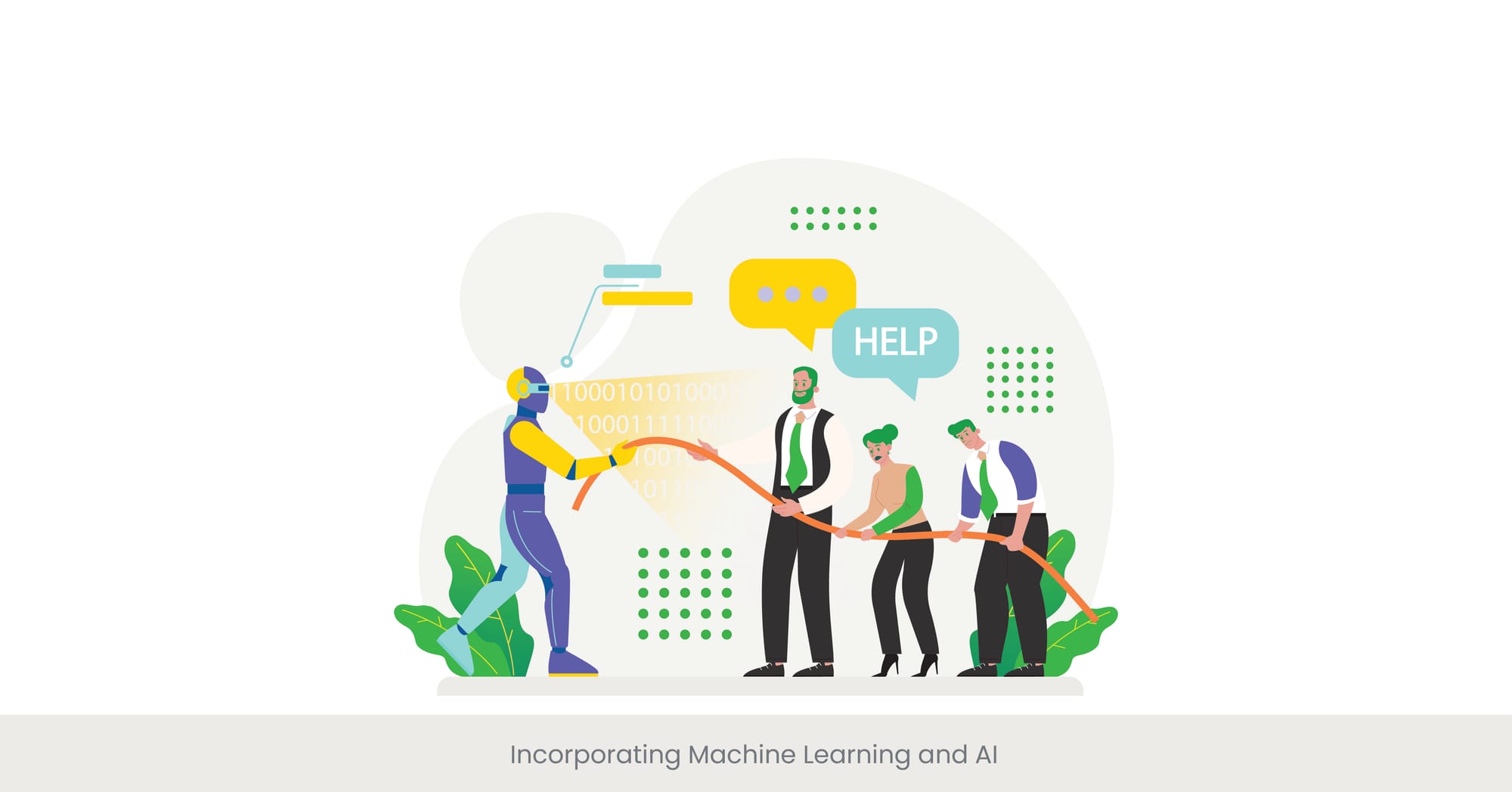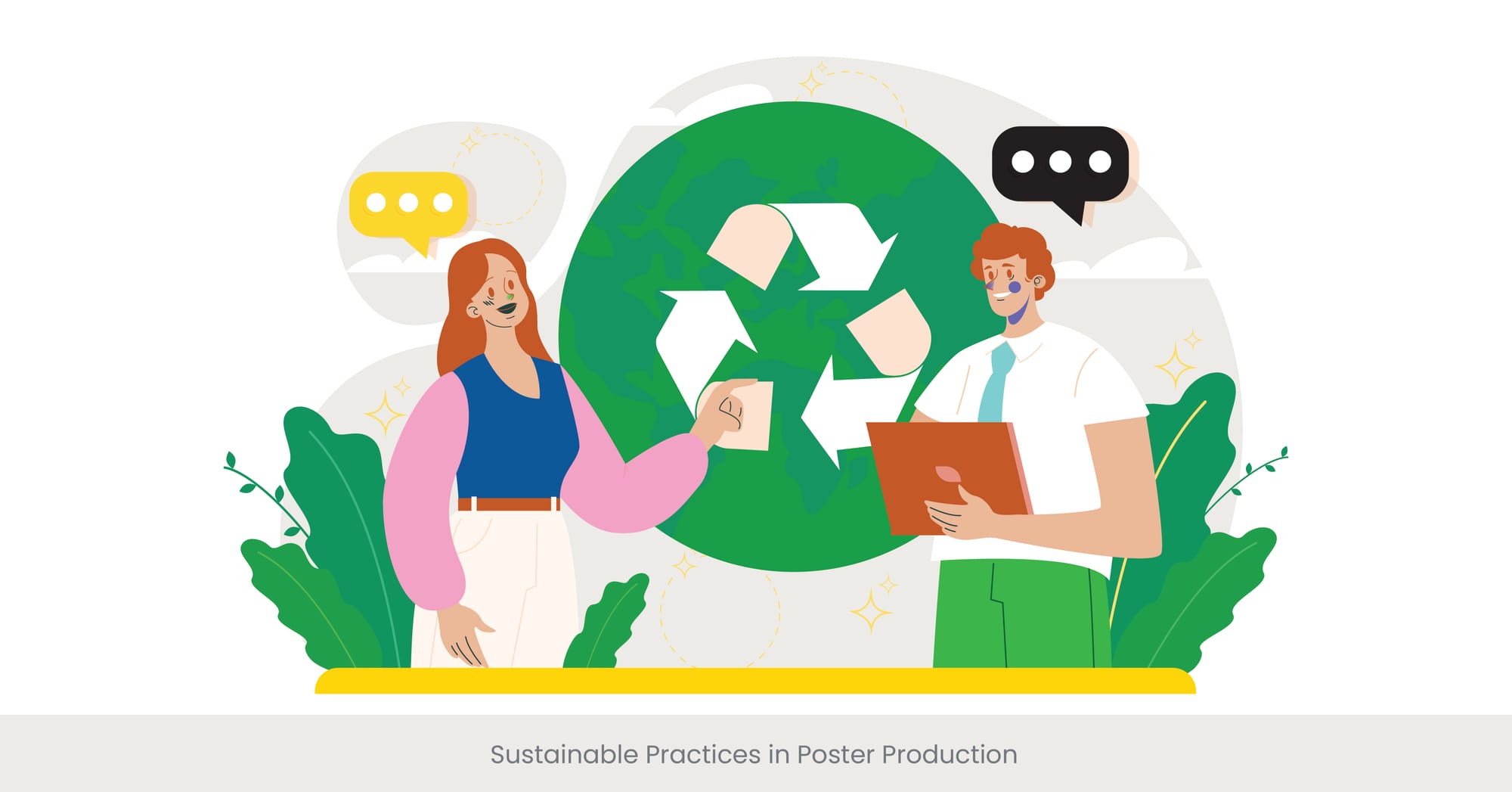
The Impact of New Technologies on Poster Design

Introduction: Revolutionizing Visual Communication
The landscape of poster design is undergoing a radical transformation, driven by the advent of new technologies. These innovations not only enhance the aesthetic appeal of posters but also extend their functionality, making them more interactive and impactful.
Background: Technological Advancements in Design
Recent years have seen significant technological strides in poster display in areas like augmented reality (AR), high-resolution printing, and digital display technologies. These advancements have opened new avenues for designers to experiment with how posters are created and consumed, pushing the boundaries of traditional poster design. Technologies such as AR also contribute to the evolution of Poster Presentation Coaching, as they provide new skills and techniques for coaches to teach effective engagement strategies.
Real-World Applications and Innovations
For example, AR technology has enabled designers to create "living" posters that offer interactive experiences through mobile devices. At a recent design expo, posters equipped with AR could display animated graphics or additional information when viewed through a smartphone app, significantly increasing engagement and providing a richer viewer experience. This shift emphasizes the importance of effective visual communication for posters, as interactive elements like AR can enhance the message and engagement.
Expert Insights and Future Outlook
Industry experts predict that as these technologies become more accessible, we will see a surge in their application within poster design. Publications like "Design Tech Review" suggest that the integration of IoT devices and smarter analytics will soon allow posters not only to inform but also to collect data on viewer interactions. This could lead to highly personalized content delivery and even more dynamic engagement strategies, benefiting services like Poster Presentation Services.
The Evolution of Data Visualization Tools

Introduction: Enhancing Poster Designs with Advanced Visualization
Data visualization tools have significantly evolved, providing poster designers with more sophisticated ways to present complex information. These tools transform raw data into compelling visual narratives that captivate and inform audiences. Designers can now leverage Poster Design Templates that incorporate advanced data visualization for clearer and more informative designs.
Background: From Basic Charts to Interactive Graphics
Originally limited to simple charts and graphs, data visualization tools have expanded to include interactive elements, real-time data integration, and complex animated visualizations. Advances in software capabilities have made it possible to create more dynamic and informative posters that can adapt to the viewer’s input or update as new data becomes available. Designers now use these advanced tools to create Poster Presentation Services that offer real-time updates and interactive features.
Real-World Examples of Cutting-Edge Visualizations
At a recent scientific conference, researchers used advanced visualization tools to create a poster that dynamically illustrated climate change data over several decades. Viewers could interact with the poster to see specific year-by-year changes, enhancing their understanding and engagement with the material. This dynamic interaction highlights the growing need for visual communication for posters, as it ensures that the data is not only presented but also understood.
Expert Insights and Recommendations
Experts believe that the future of data visualization in poster design will lean heavily on real-time data and augmented reality, providing a more immersive experience. "Visualizing the Future," a report by a leading tech think tank, suggests that designers will increasingly use tools like Tableau and Microsoft Power BI, which offer extensive capabilities for creating interactive and live-updating visualizations. Additionally, incorporating user feedback mechanisms can further enhance the effectiveness of these visual tools. This creates an opportunity for Poster Presentation Coaching to include real-time data integration strategies.
Incorporating Machine Learning and AI

Introduction: The Convergence of AI with Poster Design
The integration of machine learning and artificial intelligence (AI) into poster design is revolutionizing how information is processed and displayed. These technologies allow for smarter, more adaptive presentations that can change based on audience interaction and feedback. As Poster Design Templates become more AI-driven, they can adapt to user preferences in real time, ensuring that content resonates with individual viewers.
Background: AI's Role in Enhancing Design
AI and machine learning are being increasingly utilized to automate design processes, enhance aesthetic decisions, and optimize content layout based on viewer data. This technology can analyze vast amounts of information to identify patterns and preferences, thereby informing design choices that improve user engagement. The application of AI enhances Poster Presentation Services, helping designers create content that is more engaging and relevant to viewers.
Real-World Applications and Impact
An innovative example of this technology in action was seen at a tech expo, where a poster designed with AI dynamically adjusted its content and layout based on real-time audience interactions. Sensors detected which sections of the conference poster drew more attention, prompting the AI to modify visual elements to highlight popular content or simplify complex information. This demonstrates the importance of visual communication for posters, where AI can play a key role in delivering more targeted messages.
Expert Insights and Future Prospects
Experts predict that AI will play a pivotal role in the future of poster design, particularly in tailoring content to individual preferences and contexts. A publication titled "AI in Design" discusses how AI tools can be used to create designs that not only respond to user behavior but also predict future trends and preferences. This capability could lead to highly personalized and effective poster presentations that actively engage viewers by addressing their specific interests and needs. Poster Presentation Coaching is expected to incorporate AI tools to help designers refine their strategies and techniques.
Sustainable Practices in Poster Production

Introduction: Embracing Eco-Friendly Design
As environmental concerns become increasingly prominent, sustainable practices in poster production are more important than ever. This shift not only addresses ecological impacts but also resonates with a growing audience concerned about sustainability. The trend towards eco-friendly materials and production methods can be integrated into Poster Design Templates, ensuring that sustainable practices are part of the design process.
Background: The Drive Towards Greener Materials
The movement towards sustainable poster production involves using eco-friendly materials such as recycled paper, biodegradable inks, and digital formats that reduce physical waste. These practices are part of a broader trend in design and production that prioritizes minimal environmental impact, aligning with the growing demand for eco-conscious Poster Presentation Services.
Real-World Examples of Sustainable Initiatives
For instance, poster sessions at a recent international art festival featured posters made entirely from recycled materials and printed with soy-based inks. Additionally, the event utilized digital displays to reduce the number of physical posters, significantly cutting down on paper use and waste. These efforts underscore the importance of visual communication for posters, where eco-friendly designs can carry powerful messages about sustainability.
Expert Insights and Industry Trends
Digital interactivity is poised to redefine the standards of engagement in poster design. As technology evolves, interactive elements are becoming integral to delivering dynamic and compelling content that captivates audiences. Incorporating Poster Presentation Coaching that highlights these interactive elements will ensure designers are equipped to create highly engaging content.
The Future of Digital Interactivity

Introduction: Elevating Engagement Through Technology
Digital interactivity is poised to redefine the standards of engagement in poster design. As technology evolves, interactive elements are becoming integral to delivering dynamic and compelling content that captivates audiences.
Background: Advancements in Interactive Technologies
The progression of digital technologies such as touchscreens, QR codes, augmented reality (AR), and virtual reality (VR) has broadened the possibilities for interactive poster designs. These tools allow audiences to engage with content in intuitive and immersive ways, offering personalized experiences based on user interaction.
Real-World Examples of Enhanced Interactivity
A notable application was showcased at a tech expo where interactive posters equipped with touch-responsive surfaces allowed attendees to navigate through different layers of information about technological innovations. This hands-on interaction not only made the learning process more engaging but also allowed viewers to control the depth of information they received.
Expert Insights and Future Directions
Experts predict that as digital technologies continue to advance, we will see even greater integration of interactivity in poster designs. The "Interactive Design Annual Review" suggests that future posters might incorporate AI-driven elements that adapt in real-time to the interests shown by viewers, using eye-tracking technology to adjust content dynamically. This level of customization will likely enhance the effectiveness of communication and engagement in educational, commercial, and exhibition settings.
Predictive Analytics in Audience Engagement

Introduction: Tailoring Content with Data-Driven Insights
Predictive analytics is transforming how designers and organizers engage with their audiences by allowing them to anticipate needs and preferences before an event occurs. This approach uses historical data and machine learning algorithms to forecast audience behaviors and optimize engagement strategies.
Background: The Power of Prediction in Design
Utilizing predictive analytics involves collecting and analyzing data from previous interactions to identify patterns and see trends in poster presentations. This information can then inform decisions about design elements, content placement, and interaction opportunities, making posters not only visually appealing but also strategically effective.
Real-World Examples of Predictive Analytics at Work
At a recent digital marketing conference, organizers used predictive analytics to customize the content of digital posters displayed during various sessions. By analyzing past attendee data, they tailored messages to match the interests and professional backgrounds of current conference attendees, significantly increasing engagement and satisfaction.
Expert Insights and Practical Applications
Experts in data analytics recommend integrating predictive tools early in the design process to make informed decisions about content relevance and presentation style. "Forecasting Engagement: The Role of Analytics in Poster Design," a leading industry publication, highlights several tools like Google Analytics and Tableau that can aid in gathering and interpreting engagement data. These insights are invaluable for not only improving current presentations but also for planning future events based on predicted audience preferences and behaviors.
The Role of Big Data in Poster Creation

Introduction: Harnessing Vast Data for Enhanced Design
Big Data is playing an increasingly significant role in poster creation, providing designers with insights that can transform how they conceptualize and execute their projects. By leveraging large datasets, designers can create more informed, targeted, and effective posters.
Background: The Integration of Big Data in Design
The surge in data generation and collection technologies has made vast amounts of information available to designers. This data, when analyzed, can reveal audience preferences, design trends, and engagement patterns that inform the creative process in unprecedented ways.
Real-World Examples of Big Data Driving Design
A compelling example of Big Data's impact was observed in a campaign for environmental awareness. The designers analyzed data from social media, surveys, and web traffic to identify the most compelling environmental issues for their audience. The resulting posters were highly targeted and successful in driving engagement and action.
See How INK PPT Uses Data to Drive Results
Design experts advocate for the strategic use of Big Data to inform design decisions. In "Big Data in Visual Arts," a well-regarded journal article, the benefits of integrating data analytics into the design process are outlined. It suggests tools and methodologies for collecting and analyzing data, emphasizing the importance of aligning design strategies with empirical evidence to maximize impact. Additionally, experts caution about the ethical considerations and the need for maintaining privacy when using personal data.
Cross-disciplinary Influence on Design Trends

Introduction: Fusing Fields for Innovative Design
The influence of various academic and professional fields on scientific poster and design is shaping innovative trends that enhance both the aesthetic and functional aspects of posters. This cross-disciplinary approach integrates concepts from science, technology, art, and beyond to create compelling visual communications.
Background: The Synergy of Diverse Disciplines
The convergence of disciplines such as graphic design, psychology, technology, and environmental studies has led to a richer palette of design techniques and tools. These influences encourage designers to think outside traditional boundaries and incorporate a broader range of ideas and methods into their work.
Real-World Examples of Cross-disciplinary Designs
An exemplary case of this trend was a poster series for a climate change conference, which utilized insights from environmental science, statistics, and graphic art to create highly engaging and informative displays. The conference posters used data visualization techniques inspired by statistical analysis and were crafted with artistic styles that highlighted the urgency of environmental issues.
Expert Insights and Future Directions
Experts in design and academia recognize the value of this integrative approach and predict it will continue to grow. Articles like "Innovating Through Integration" in the journal of design education discuss how educational programs are increasingly encouraging students to engage with multiple disciplines. These programs equip future designers with the skills to apply a wide array of knowledge to visual challenges, potentially leading to breakthroughs in how information is presented and perceived.
Globalization and Cultural Influence in Design

Introduction: Embracing Global Perspectives
Globalization has a profound impact on poster design, bringing a rich tapestry of cultural influences that broaden the visual language and appeal of posters. This global perspective fosters creativity and inclusivity, making designs more resonant with diverse audiences.
Background: The Melting Pot of Design
As the world becomes more interconnected, designers are increasingly drawing on a diverse range of cultural aesthetics and symbols to enhance the appeal and effectiveness of their work. This blend of global cultures not only enriches the design but also helps communicate messages across cultural boundaries.
Real-World Examples of Cultural Integration
For instance, one research project for an international public health campaign utilized poster designs that incorporated visual elements from African, Asian, and Latin American art traditions to communicate effectively across these diverse regions. This approach not only increased the visual attractiveness of the posters but also enhanced their relevance and impact on the targeted global audience.
Expert Insights and Ethical Considerations
Experts in cross-cultural design emphasize the importance of sensitivity and authenticity when incorporating cultural elements into design. "Global Design Ethics," a critical resource for designers, outlines best practices for respectful cultural representation scientific posters, stressing the need to avoid cultural appropriation by engaging with culture experts and representatives during the design process. This approach ensures that the posters are not only visually appealing but also culturally respectful and inclusive.
Embrace Cultural Sensitivity in Your Designs – Get Started Today!
Ethical Considerations in Future Poster Presentations

Introduction: Navigating Ethics in Design
As poster design continues to evolve, ethical considerations become increasingly important. Designers must navigate issues such as data privacy, representation, and environmental impact to ensure their work upholds ethical standards and promotes social responsibility.
Background: The Ethical Landscape in Design
Ethical design involves making decisions that respect user privacy, provide fair representation, and minimize environmental damage. These concerns are especially pertinent in an era where digital technologies and big data play a major role in how posters are created and distributed.
Real-World Examples of Ethical Challenges
A case in point is a recent campaign that used personalized data to create targeted health posters. While effective, this approach raised concerns about data privacy and consent, prompting a reevaluation of how personal information is used in design. The organization responsible revised its approach to ensure transparency and user control over personal data.
Expert Insights and Guidelines
Experts stress the importance of incorporating ethical considerations from the outset of the design process. "Ethics in Visual Communication," a seminal book on the topic, recommends adhering to established guidelines such as those from the AIGA (American Institute of Graphic Arts) on professional practices. It suggests regular ethical audits of design projects to ensure compliance with evolving standards and to foster trust and integrity in the design community.
Thanks for reading and be sure to share this guide if you enjoyed it!
Hungry for more Visualization Skills, Communication Skills? Here are a few guides you might like:
Ensure Your Designs Are Ethically Sound – Connect with Us!
Frequently Asked Questions
1. What are the best topics for poster presentations?
The best topics for poster presentations are those that are current, research-based, and have visual appeal. Topics for conference poster session should be engaging and relevant to the audience, focusing on innovative findings, reviews, or case studies in fields such as science, technology, healthcare, and environmental studies.
2. What makes a great poster presentation?
A great poster presentation effectively communicates its message through clear, concise content and visually appealing design. It should include engaging visuals, well-organized information, and interactive elements if possible, such as QR codes or augmented reality features to enhance understanding and engagement.
3. How do I make my poster presentation stand out?
To make your poster presentation stand out, use high-quality graphics, a cohesive color scheme, and an organized layout that guides the viewer through the content logically. Incorporating interactive elements and ensuring the poster is tailored to your audience’s interests and knowledge level also helps attract and retain attention during poster session.
4. How can I make my poster presentation attractive?
Make your poster presentation attractive by using vibrant, eye-catching graphics, minimal text, and clear, readable fonts. Balance the poster template layout to include plenty of white space to prevent overcrowding and use high-resolution images. Additionally, align the design elements consistently to produce a professional and aesthetically pleasing poster.
5. What is the role of artificial intelligence and machine learning in poster design?
Artificial intelligence (AI) and machine learning can analyze data on viewer preferences and behaviors to inform design decisions, making posters more engaging and personalized. AI can also automate design processes, such as poster layout and color selection, to optimize visual impact based on empirical data.
6. What is the main goal of AI and machine learning in design?
The main goal of AI and machine learning in design is to enhance the efficiency, effectiveness, and personalization of design processes. These technologies can help predict trends, automate repetitive tasks, and provide designers with insights into user interactions and preferences, leading to more targeted and successful designs.
7. Why do we need AI and machine learning in poster design?
AI and machine learning are needed in poster design to handle large datasets more efficiently, predict user engagement, and personalize content to meet the specific needs of different viewer segments. These technologies streamline the design process and enhance the relevance and impact of posters.
8. What is the role of AI in learning and development?
In learning and development, AI plays a crucial role by providing personalized learning experiences, automating administrative tasks, and offering insights based on data analysis. AI can adapt learning content to match the learner’s pace and style, enhancing engagement and effectiveness.
9. What are ethical decision considerations in poster design?
Ethical decision considerations in poster design include respecting copyright laws, ensuring accuracy and honesty in presented information, using inclusive and non-offensive imagery, and maintaining privacy and confidentiality when using personal data.
10. What are examples of ethics in research?
Examples of ethics in research include obtaining informed consent from participants, ensuring confidentiality and anonymity, avoiding plagiarism, and conducting studies without bias. Ethical research involves respecting the rights and dignity of participants and adhering to the scientific method to ensure integrity and reliability of findings.



%20(1).jpg)
%20(1).jpg)


